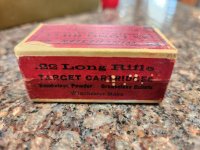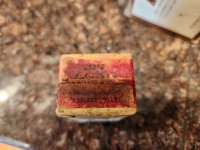Another thing to remember is that ammunition boxes, even unusual or rare ones, are not the easiest to sell, as there is a somewhat limited number of serious ammunition collectors who are difficult to reach. The only large US ammunition collectors group is the International Ammunition Assocation which has a website much like this one, plus a bi-monthly journal which engages in buying and selling collectible ammunition. Selling to antique ammunition dealers (there are several of them like Ray Giles) is possible, but they will want to buy boxes at a price no more than 50% of what they think they can sell them for.
Recently, perhaps what was the largest small arms ammunition collection in the world, the Woodin collection, was being liquidated. It contained large numbers of absolutely unique items that could not be found anywhere else on earth. Many of the items remain unsold for want of interested buyers. Apparently no one wanted to buy the entire collection despite heroic efforts to sell it intact.





